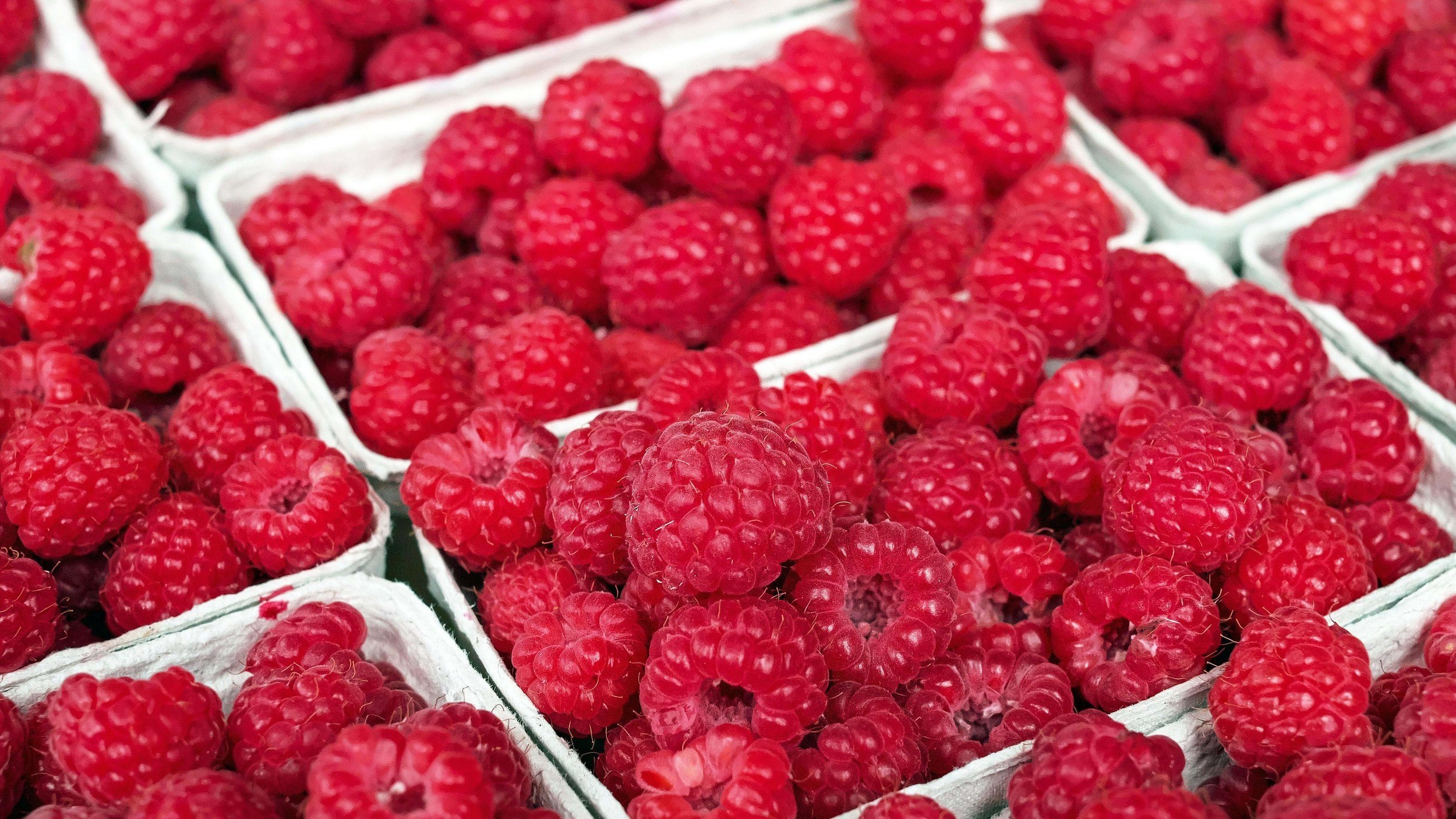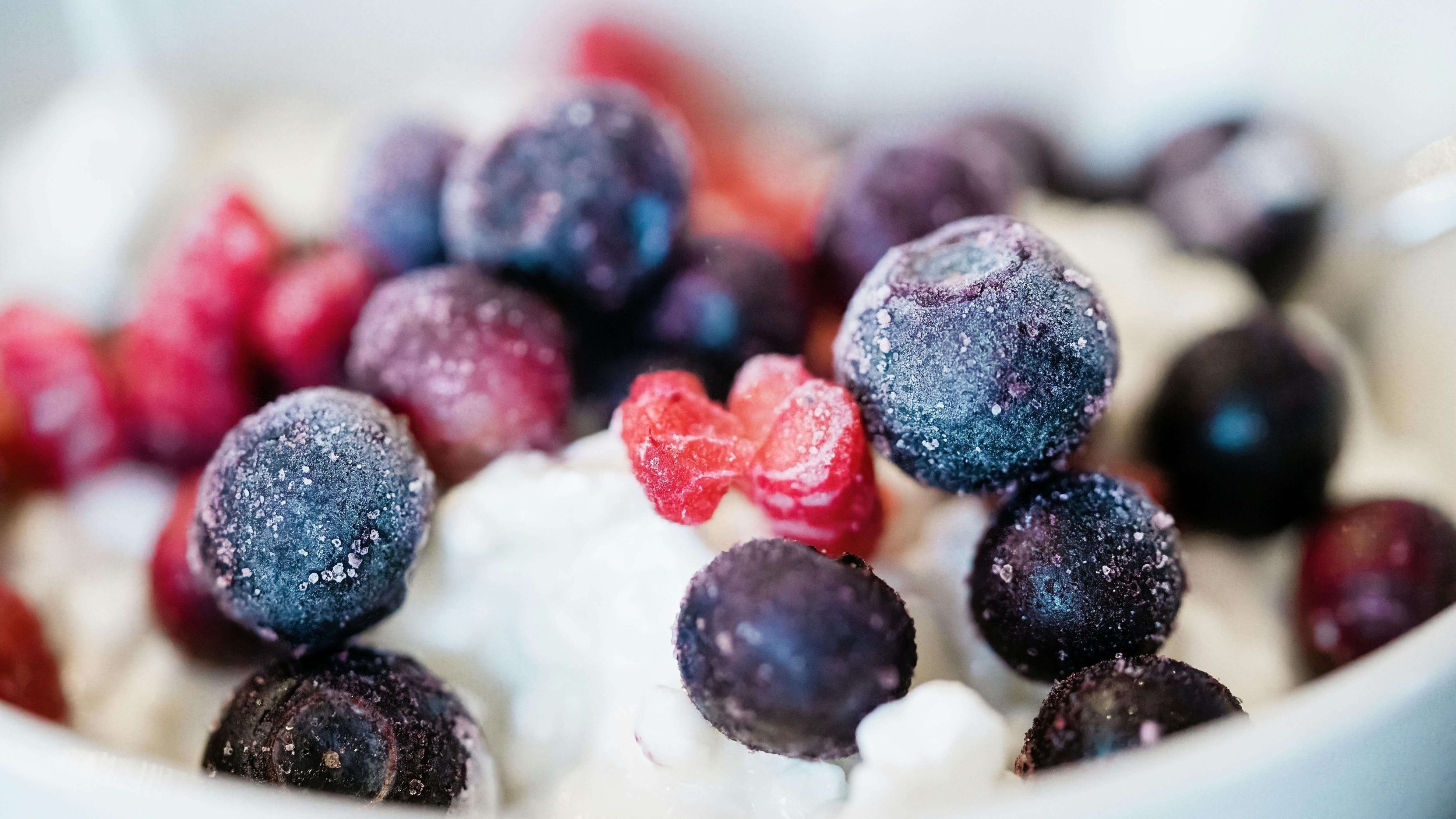A new take on the health benefits of berries
Most people know that berries are healthy. So how do we encourage people to eat more of them?
We explore how health professionals can effectively communicate the benefits of berries, and why antioxidants might not be the best selling point.
Image: Small but mighty - berries contain a range of nutrients and compounds associated with good health (Credit: Pexels).
Key takeaways:
Berries are a health promoting superstar, rich in fibre, vitamins and polyphenols and low in sugar.
Using the concept of antioxidants to message the benefits of berries may be losing its appeal – polyphenols offer a new narrative to explore.
Eating berries can have (almost) immediate health benefits. Eat berries for breakfast and improve your health by morning tea.
Accessibility is an important part of the conversation – frozen is just as nutritious as fresh.
Berry special
For such small fruits, berries pack a big nutritional and health promoting punch. Rich in bioactive compounds and micronutrients, berries are also low in sugar and high in fibre. Packaged in convenient bite sized portions, there is evidence that berries positively impact brain, gut and heart health.
So, if berries are so good for us – why aren’t we eating more of them? And how can we change this?
Keen to access the latest factsheets and client resources on berries? Check out our Berries page on the health professional hub.
Falling short on fruit recommendations
Image: Australian adults (still) aren’t eating enough fruit, including berries. (Credit: Pexels).
It’s not just berries – Australian adults are not eating enough fruits across the board. Data from the Australian Health Survey collected in 2022 found that approximately six out of ten adults failed to meet recommendations from the Australian Dietary Guidelines to consume two serves of fruit per day. Children fare a bit better, but four out of ten are still not consuming the recommended daily serves.
Most people are aware that eating fruit, including berries, is good for your health. It’s a message that has been tirelessly promoted by public health agencies for decades - yet we are making little progress in shifting consumption patterns. Worryingly, some predictive modelling is even suggesting we could be going backwards.
With the gap between recommendations vs reality widening, it might be time to revisit how the public health and nutrition professions message the benefits of fruit and berries.
Aunty-who?
Image: Antioxidants have been used since the 1990’s to promote fresh fruit and vegetables, including berries. (Credit: Pexels).
A common umbrella term used to promote the health benefits of berries is that they are a rich source of antioxidants. Entering the public nutrition vocabulary in the 1990’s, the term antioxidants loosely refers to compounds that can neutralise radical oxygen species (or free-radicals). These free-radicals are produced by the normal biological process of oxidation, and in response to environmental stressors like smoking, pollution and radiation. The body has its own antioxidant systems to target these free-radicals, however dietary sources of antioxidants can also play a role in limiting oxidative stress on cells, which can reduce the risk of a diseases like cardiovascular disease and cancer.
Antioxidants can include nutrients like vitamins and minerals, as well as non-nutrients like bioactives. Considering antioxidants are found in abundance in plant-foods, it makes sense that the term has been used as a catch-cry to promote a well-balanced, plant-rich diet (as recommended by most dietary guidelines).
Poly’s in town
Image: When it comes to communicating nutrition science, picking the right evidence based story is key to inspiring behaviour change. (Image: Pexels)
With the antioxidant message well into its second decade, and fruit consumption stalling, it may be time to reflect on the narrative around antioxidants, berries and health.
The reality is that there exists a paradox in communicating nutrition science: too much information can feel overwhelming and conflicting. But repeating the same messages over and over (e.g. eat fruit because it is good for you, fruit contains antioxidants) can get stale, and behaviour change can stall.
Enter polyphenols – an updated and evolved narrative on antioxidants. So, what are they, and what do they have to do with berries? And how is the polyphenol message different to antioxidants?
Polyphenols are the main bioactive compound in plants, and they are responsible for colour, flavour and smell of plant foods. Produced by plants in response to environmental stressors and pathogens, polyphenols can be found in fruits and vegetables, grains, legumes nuts and seeds, oils, tea coffee and wine. Diverse as the range of plant foods they are found in, polyphenols you may have heard of include anthocyanins, resveratrol, lutein and lignan to name a few.
A lesser know story is that berries (particularly blueberries) contain the highest amount of polyphenols per serve compared to any other food.
This is significant as it offers an opportunity to talk about berries in a new light, as the health benefits of polyphenols go far beyond the antioxidant story line.
Polyphenols are much more than antioxidants
Image: Research has found blueberries have the highest amount of polyphenols per serve. (Credit: Pexels).
It’s true that polyphenols have antioxidant activity - but they offer so much more. There is emerging evidence that the health benefits associated with consuming polyphenol compounds include:
Cardioprotective effects: Anti-platelet and anti-inflammatory, polyphenols can also inhibit LDL oxidation and lower incidents of CVD.
Normal insulin function Polyphenols can enhance insulin production and improve insulin sensitivity.
Prebiotic: Polyphenols also have prebiotic-like effects and can increase beneficial microbial species including Bifidobacterium & Lactobacilllus.
Anti-cancer: Human cancer cell models have shown that polyphenols may have a protective effect.
Anti-aging: The processes of oxidation and inflammation are linked to aging, so it makes sense that polyphenols with antioxidant and anti-inflammatory effects are associated with anti-aging benefits.
Neuroprotective: Polyphenols can also support memory, improve brain plasticity and may reduce cognitive decline.
Given the wide-ranging biological activity of polyphenols, it’s unsurprising that dietary patterns rich in plant foods – such as the Mediterranean or DASH diets – are consistently associated with positive health outcomes. It’s likely that the polyphenols, and other bioactive compounds, are involved in mechanisms associated with the above health outcomes.
This offers a fresh opportunity for health professionals – or anyone tasked with communicating nutrition science – to update the narrative on berries to include more polyphenol messaging.
Short on time? Say it with a factsheet: Berry polyphenol infographic.
A time-based benefits approach to berries
Image: The health benefits of eating berries can be experienced just 30 minutes after consumption. (Credit: Pexels).
Ok, so it’s established that polyphenols are health promoting, and that they are found in plant foods, in particular berries. But for the general public, this messaging may not be different enough from the ‘eat more fruit and veg’ storyline to inspire behaviour change.
This is where the (almost) immediate health benefits of berries can come in.
For some people, changing their behaviour today to benefit a future version of themselves isn’t the best motivator for adopting healthy habits. In many cases, immediate gratification trumps waiting for delayed benefits.
The good news for berries is that they offer both. The health benefits of berries can be seen in just 30 minutes, with moderate evidence indicating an improved glucose and insulin response. At the 60-minute mark, there is strong evidence that consuming berries can improve flow mediated dilation and endothelial function, contributing to healthy blood vessels. Two hours after consuming berries can result in improved cognitive performance and reduced inflammation.
This offers health professionals an opportunity to use a time-based benefits approach to pique clients and patients interest and encourage them to consume berries. The message? Eat berries at breakfast and improve your health by morning tea.
Combined with the polyphenol narrative, the short-term benefits of berries can be used to get clients excited about adding berries to their breakfast, snacks and main meals.
Read more about the existing evidence on the short, medium and long term health benefits of eating berries here.
Accessibility is key
Image: Frozen berries are just as nutritious as fresh – and often much more affordable. (Credit: Pexels)
Like any issue in food and nutrition, information and messaging are a critical part of inspiring behaviour change – but it’s not enough. Increasing fruit consumption – including berries – means that barriers to accessibility also need to be addressed.
It’s generally accepted that the current cost of living crisis is negatively impacting consumption of fresh fruit and vegetables in Australia. From a health benefit perspective, berries are always worth including in the trolley - but the upfront cost may be hard to overcome for some families.
Taking this into account, and the fact we are heading into the cooler months where many berries are out of season, adding frozen berries to the cart is a great alternative to fresh. Just as nutritious, frozen berries can be lower in cost and have a longer shelf life.
If you have clients and patients who would prefer to buy local produce, they may wish to stock up when berries are in season and freeze batches to access during the colder months.
Recap:
Berries are rich fibre, vitamins and polyphenols, and low in sugar.
Polyphenols offer a new narrative for health professionals to explore to get patients and clients excited about berries.
Eating berries can have (almost) immediate health benefits. This offers a another communication strategy to inspire behaviour change. Key message for patients: eat berries for breakfast and improve your health by morning tea.
Frozen is just as nutritious as fresh, and can make berries more accessible and affordable.
Article contributors:
Dr Emma Beckett
Dynamic Foodie (Food & Nutrition Scientist & Communicator).
Dr Emma recently presented at Berry Quest International 2025, sharing her wealth of knowledge on berries, nutrition and health. This article was based on some of her presentation insights.
Lauren Waldon
Big Picture Foodie (Nutrition Science Communicator).
Lauren’s favourite way to eat berries is to include them in breakfast meal prep - a berry breakfast crumble or baked oatmeal made on the weekend is perfect to fuel busy weekday mornings.









